RECOIL OFFGRID Survival The Do’s and Don’ts of Wild Mushroom Foraging
In This Article
WARNING: This article is meant to be an overview and not a detailed guide on identifying and consuming edible mushrooms. Seek guidance from a trained mycologist before attempting to eat any mushrooms. Any attempt to consume mushrooms shall solely be at the reader’s risk.
When you mention harvesting — and eating — wild mushrooms, though, especially in a room full of people who’ve never experienced more than the store-bought variety, get ready to see expressions of admiration shift to skepticism.
That’s for good reason, perhaps. According to the National Poison Data Center, there are over 7,000 exposures to toxic mushrooms in the U.S. annually. Of these, 39 per year result in major harm, and statistically, 2.9 per year prove fatal.

For those who make it a point to learn a few wild mushrooms, though, nutritional rewards await. Mushrooms have more protein than most vegetables. They hold high levels of riboflavin and niacin and trace amounts of vitamin C, B1, B12, D, and E, according to the International Journal of Microbiology. Vegetarians, especially, can benefit from adding mushrooms to their diet, not only because of the protein levels, but also because mushrooms are the only nonanimal food source of vitamin D.
Medicinally, species of fungi have been shown to have antioxidant, anticancer, antiallergic, antiviral, and antibacterial characteristics, again according to the International Journal of Microbiology.
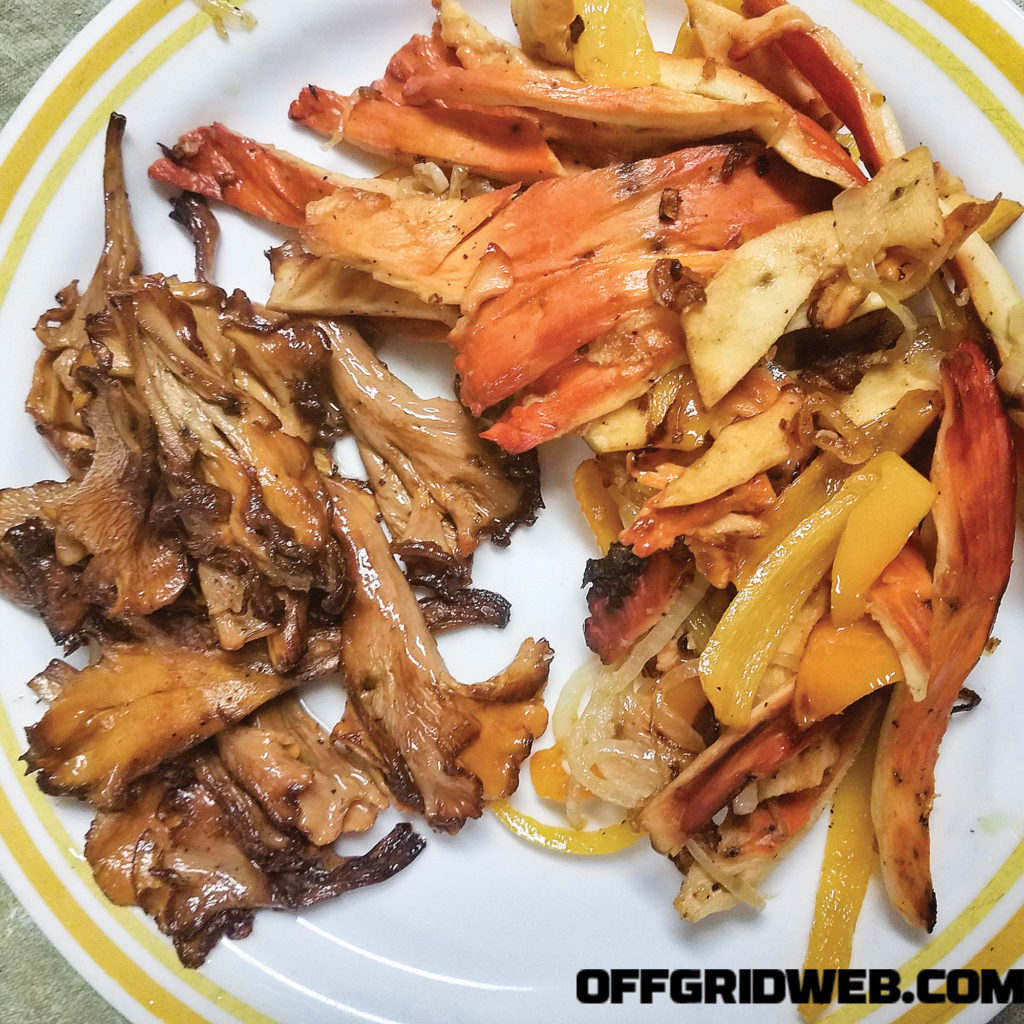
Above: Golden chanterelles sautéed in butter on the left; strips of chicken of the woods grilled with peppers and onions on the right.
Knowing What’s Out There
Foraging for mushrooms isn’t a leap one should make without being anchored to knowledgeable allies. Between 5,000 and 10,000 species of mushrooms are native to North America. Of these, about 100 are considered edible and roughly the same number are counted as toxic.
The old saying that “all mushrooms are edible once” shouldn’t be put to the test. You should be certain of the identification beyond the shadow of a doubt before ingesting any wild mushroom. In fact, learning just one or two edible species each year and then expanding your repertoire slowly is advisable to ensure that you know your chosen fungi well.
Tools for mushroom hunting will include a sharp knife, a good camera, and a few mesh bags to allow spores to be dispersed as you walk. Field guides for your location are good to include — not just identification books for mushrooms, but also for associated trees if you aren’t already familiar with common species.
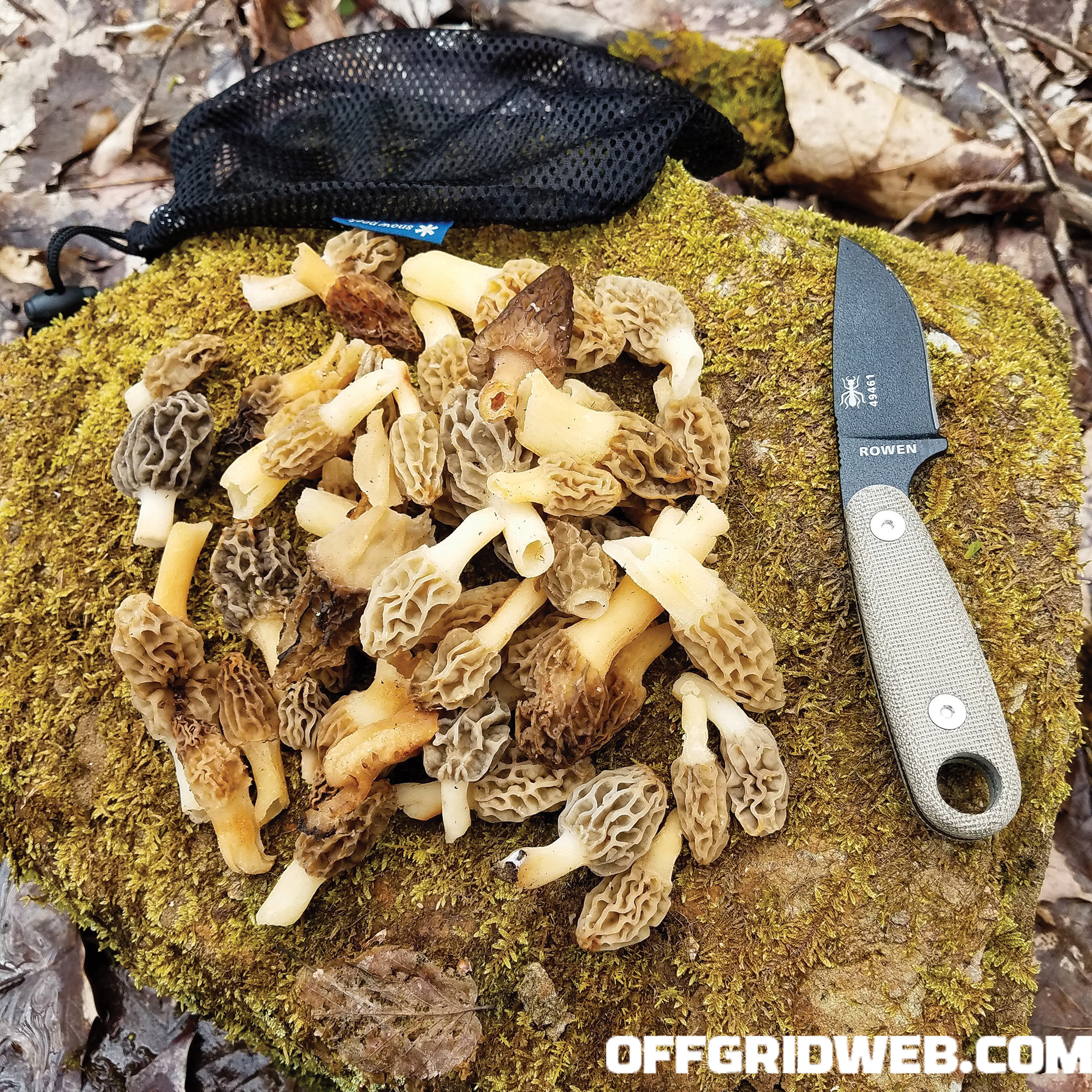
A good knife and a couple of mesh bags should be in the forager’s tool kit.
If you have a reliable cell signal, iNaturalist is a beneficial app. You can post pictures and location data that other enthusiasts can view, and multiple experts can offer input on the taxonomy of your discoveries. The Mushroom Identification Forum on Facebook is another social media tool. With 170,000 members, there’s a good chance someone has seen the mushroom in question before.
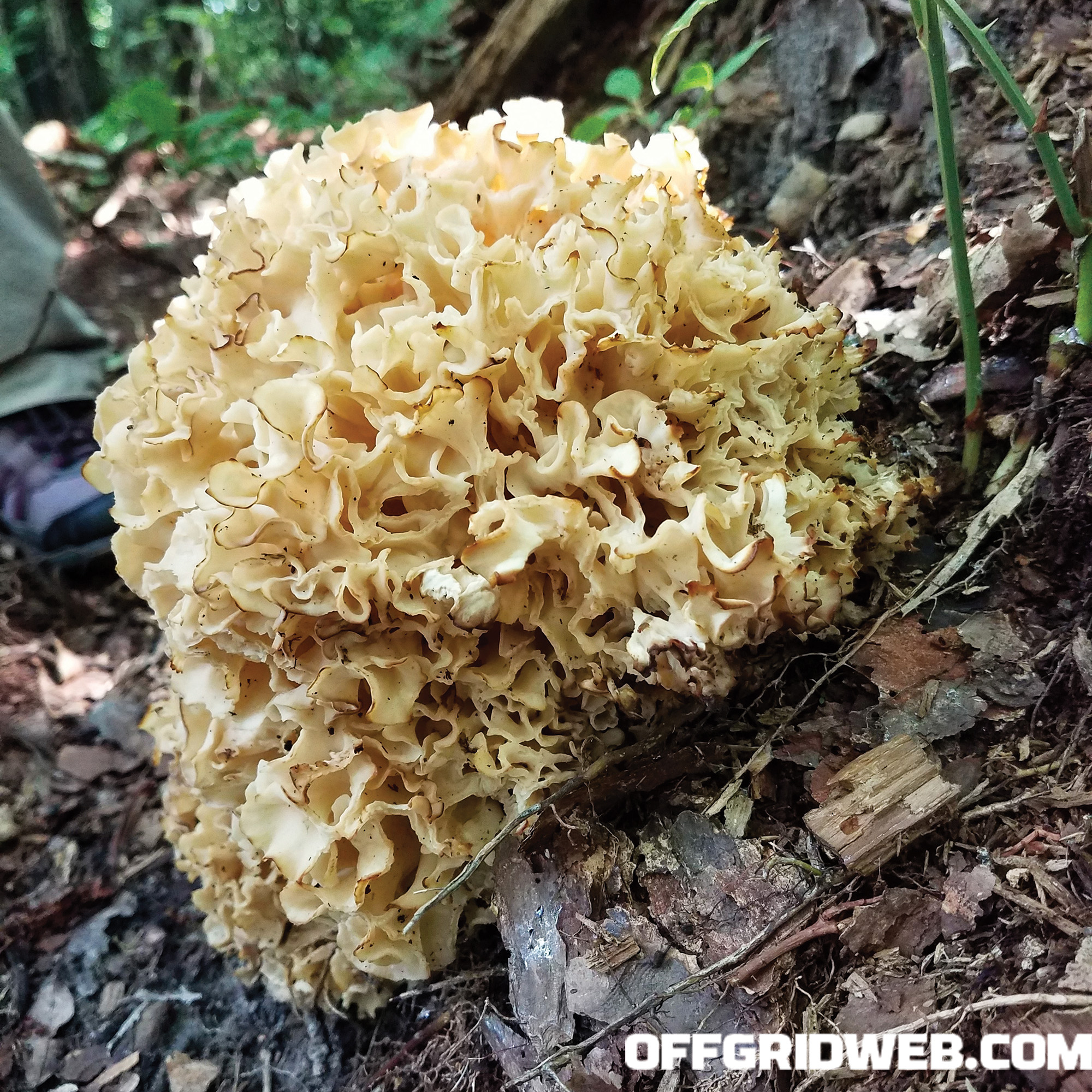
Two experts correctly identified this eastern cauliflower mushroom within an hour of posting it on the iNaturalist app.
Whenever you’re relying on photos for identification, take detailed pictures of both the upper and underneath portions of the cap, as well as the stalk. Note whether it arises from the ground, from dead wood or a living tree. Species may be distinguished by the presence of gills, pores, or other spore structures.
Spore prints can also be useful. Put the mushroom cap — spore structure down — on a sheet of paper, hydrate the cap with a few drops of water, and cover it with a cup or glass for a few hours. The color and arrangement of the resulting print can aid in identification.
Help in the Flesh
As valuable as books or online resources may be, these methods aren’t nearly as beneficial as seeing mushrooms in their natural habitat alongside someone who knows.
“The best advice I can give for people wanting to forage for edible mushrooms is to join a local mushroom club,” says Dr. Jean Williams-Woodward, University of Georgia Extension plant pathologist. “Here, we have the Mushroom Club of Georgia. The clubs often conduct forays where people can learn to identify and locate edible mushrooms in person.”
If you can’t stand shoulder-to-shoulder with an expert in the mushroom’s habitat, bring the mushroom to the expert. Don’t sweat about picking a mushroom for identification later. It’s not the same thing as yanking up a wildflower. What we call mushrooms are the fruiting bodies of a complex network of vegetative fibers we can’t see beneath the soil surface or under the bark of a tree. The mushrooms are analogous to the apples on an apple tree, springing forth from an extensive hidden organism that has successfully colonized a fallen log, a standing tree, or a patch of soil.
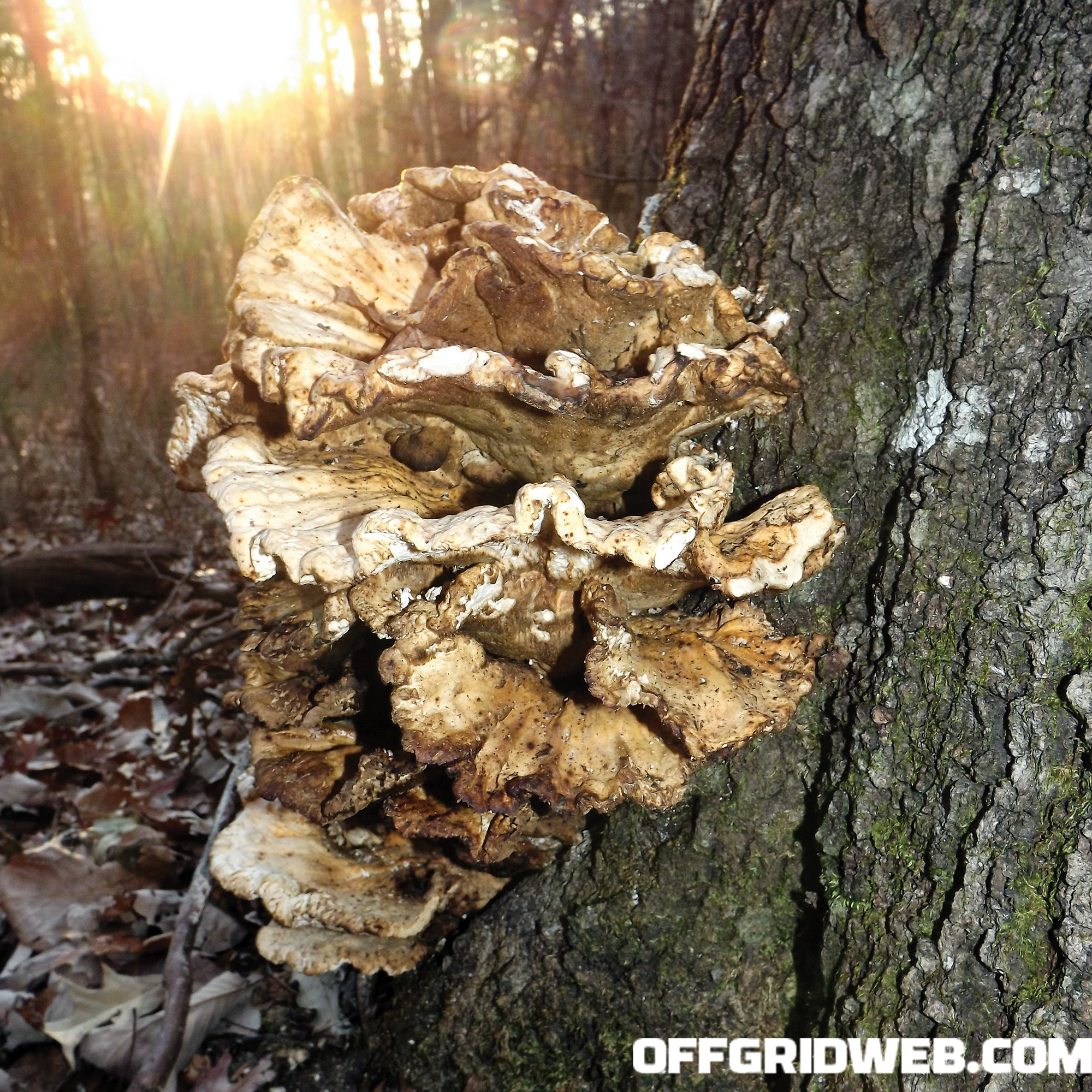
Above: Although you may stumble across edible mushrooms in the winter, they can be tough and unpleasant. With some species, though, one may return to the same tree year after year. Photo by Elizabeth Farris.
Raw or Cooked?
Most of us have eaten raw mushrooms from salad bars, but cooking any mushroom is a good idea for a couple of reasons. First of all, the cell walls of fungi contain chitin, a fibrous substance. Breaking down the chitin via cooking will make the mushrooms easier to digest, as well as making the nutrients within more accessible.
Connoisseurs often opt against washing their mushrooms, citing the fungi’s ability to soak up water like a sponge. Given that characteristic, brushing off the visible dirt and then cooking the mushrooms is a means of “cleaning” your harvest. If that leaves you squeamish, a quick rinse is acceptable, but definitely refrain from soaking them.
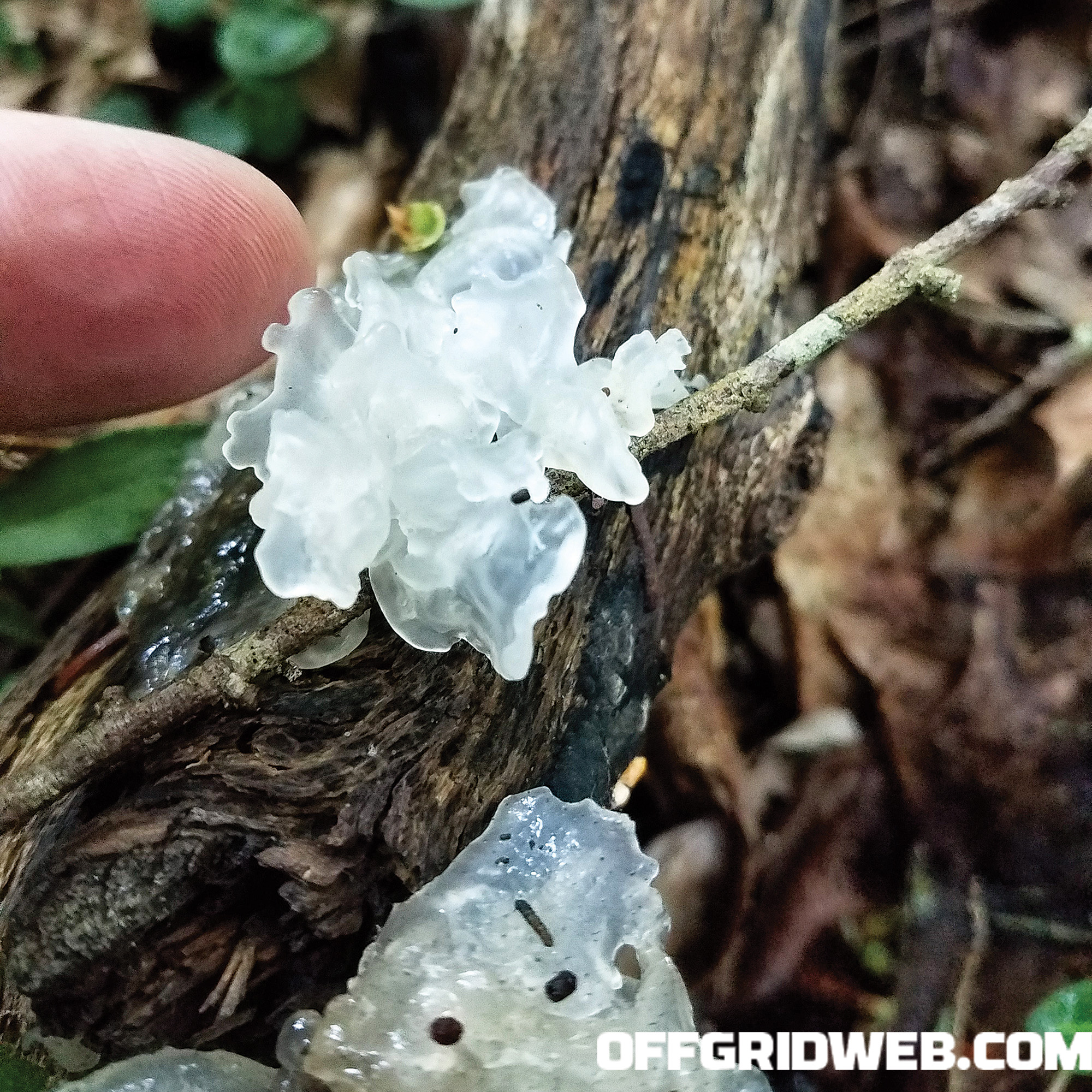
Above: A translucent ghost fungus (nonedible) — an interest in edible mushrooms will spark a broader interest in fungi in general.
> Morels (Morchella species)
It’s fair to say that many mushroom hunters get their start with the elusive morels. I decided to seek them out one Easter in Kentucky, adhering to the local lore of waiting until “the poplar leaves are as big as a mouse ear.” I walked a hundred yards along a skid trail beneath a tulip-poplar forest without finding a single “dry-land fish” (as they’re known in some locales). When I did an about face to return to my starting point, I collected a pound along that same trail I had failed to see earlier.
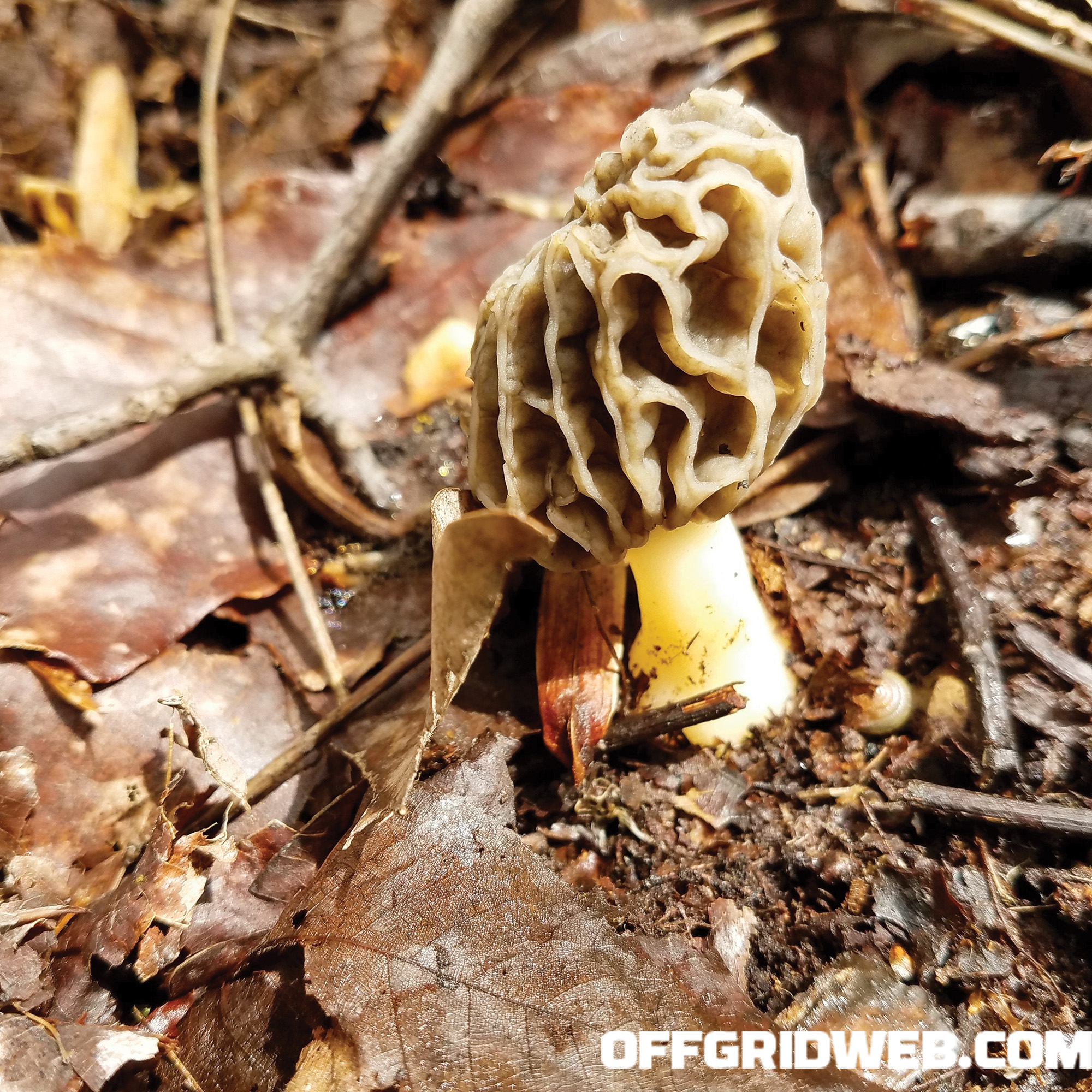
Finding that first morel in the spring can be a thrill for a forager.
Mushrooms in the genus Morchella are considered the true morels, and several species are indigenous to North America. (There’s some debate on exactly how many species there are, as these mushrooms have been classified and reclassified over the years.) Foragers may distinguish them as black, white, gray, or yellow or identify them based on the trees they’re typically found beneath.
Morchella species grow throughout the U.S. In my part of the world, I find black morels in tulip-poplar woods first and larger white morels in old orchards or beneath sycamores. Certain morels can be found under elms and sugar maples. Forest fire sites can be good locations as well.
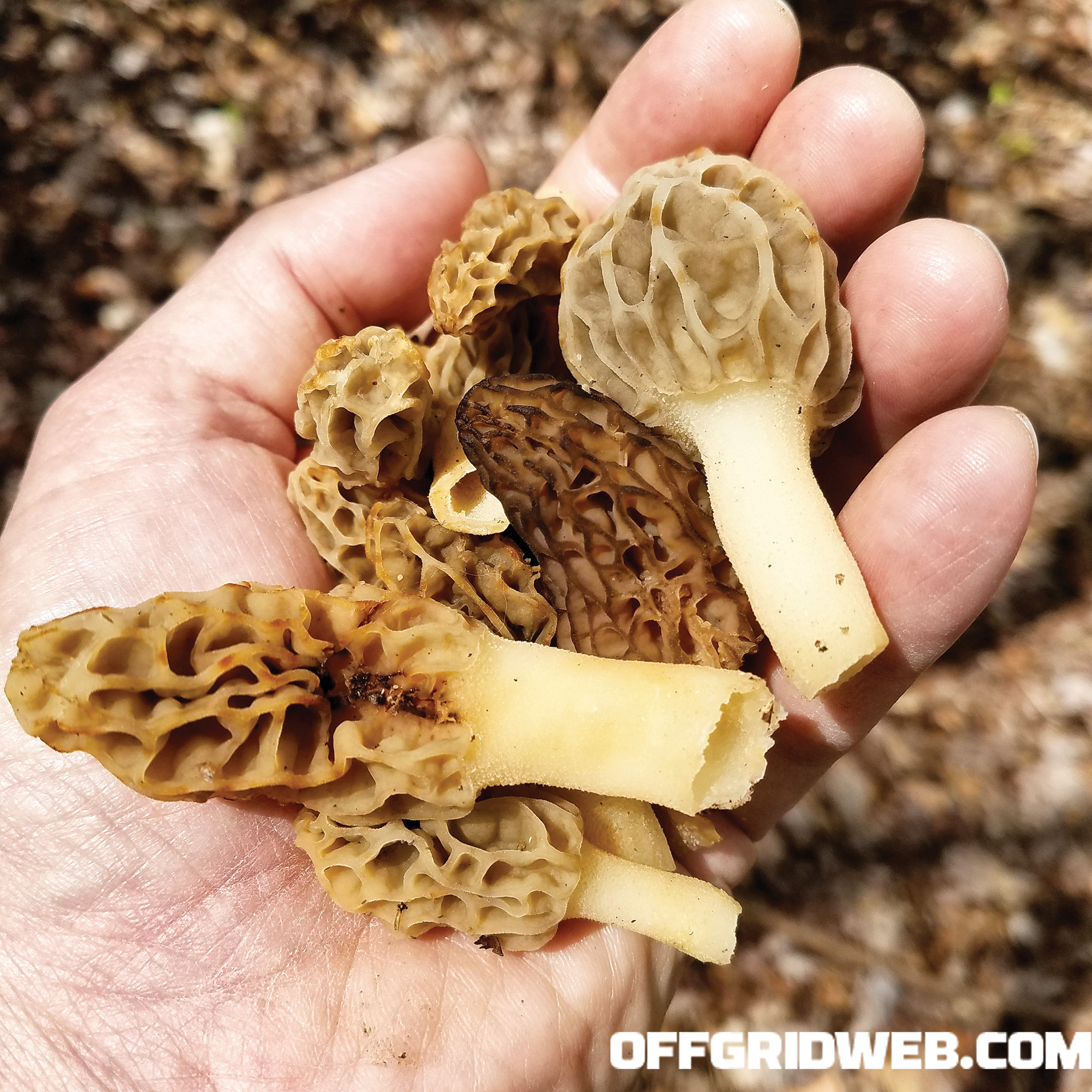
Size, color, and shape of morels can vary considerably.
The false morel is a toxic look-alike for which distinguishing characteristics are described later.
> Chanterelles (Cantharellus species)
As with morels, there are multiple species within the Cantharellus genus commonly referred to as chanterelles, and these are distributed throughout North America. However, species within the same family, but within different genera are also called chanterelles, such as the prized black trumpet or black chanterelle (Craterellus cornucopioides). And as with morels, there’s debate about the classification.
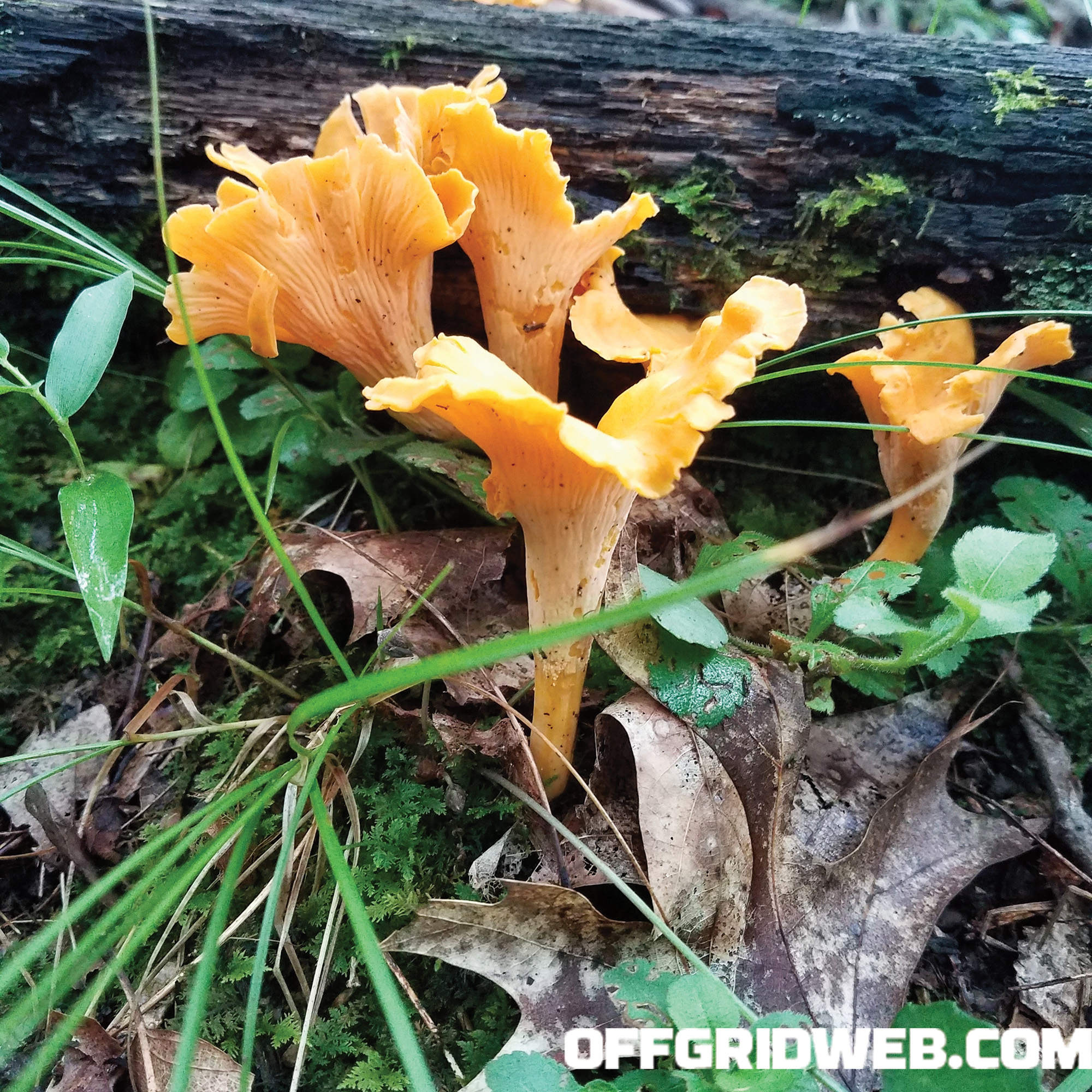
Chanterelles emerge individually from the soil — not in clumps from wood like some look-alikes.
Chanterelles grow from the ground and not attached to trees or logs, and they can be found in both hardwood and coniferous forests in the summer and fall. The golden chanterelle (Cantharellus cibarius) is perhaps one of the most easily recognized species in the genus, with a yellow to yellow-orange color and, some say, a fruity aroma.
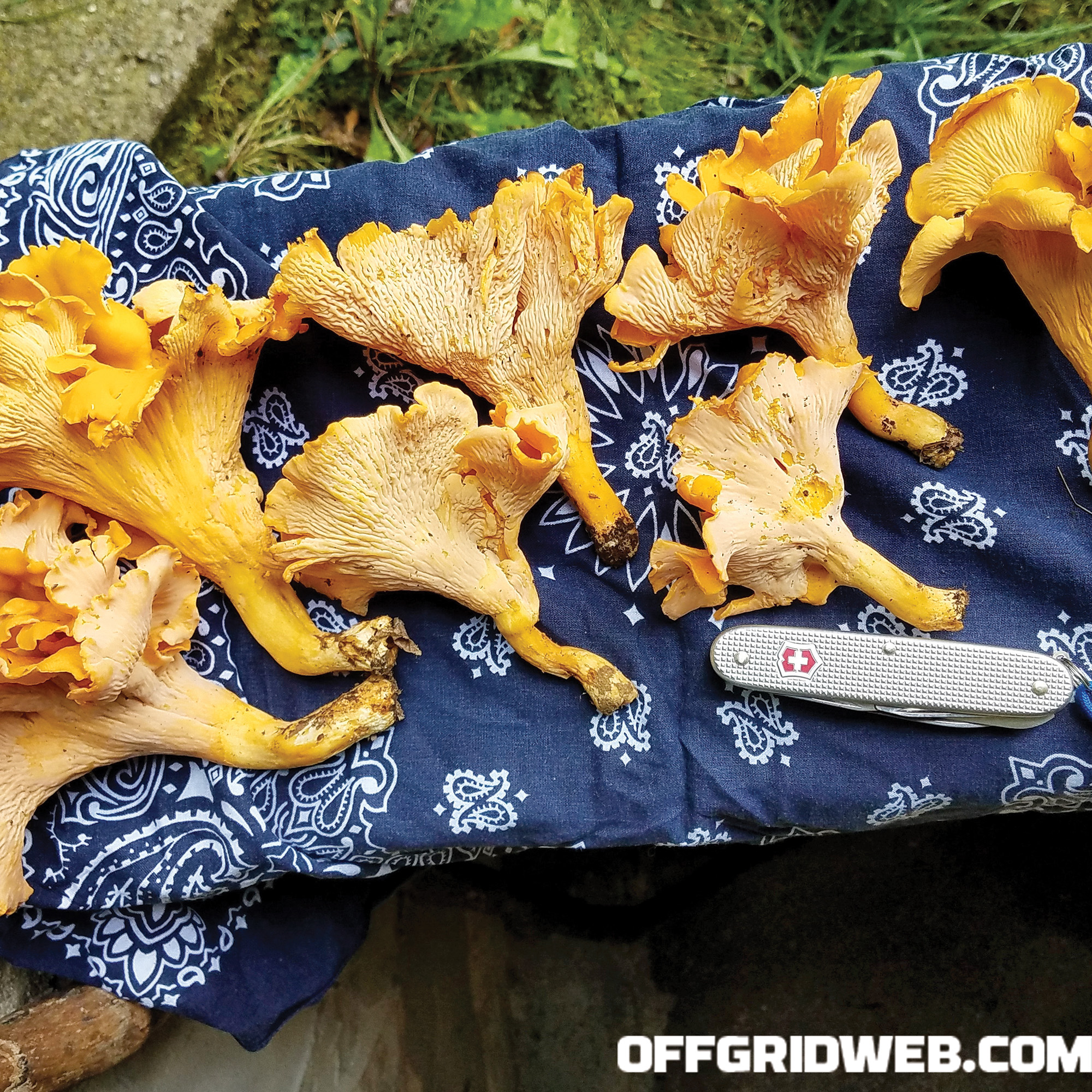
A feature of chanterelles is the presence of false gills.
> Chicken of the woods (Laetiporus sulphureus)
Some consider this firm, orange and yellow fungus to be a good choice for beginning foragers, as it stands out like a neon sign. You’ll find chicken of the woods in the summer and fall growing on logs or standing trees (living or dead). In addition to the bright colors that catch your eye, the underside will be marked by pores rather than gills.
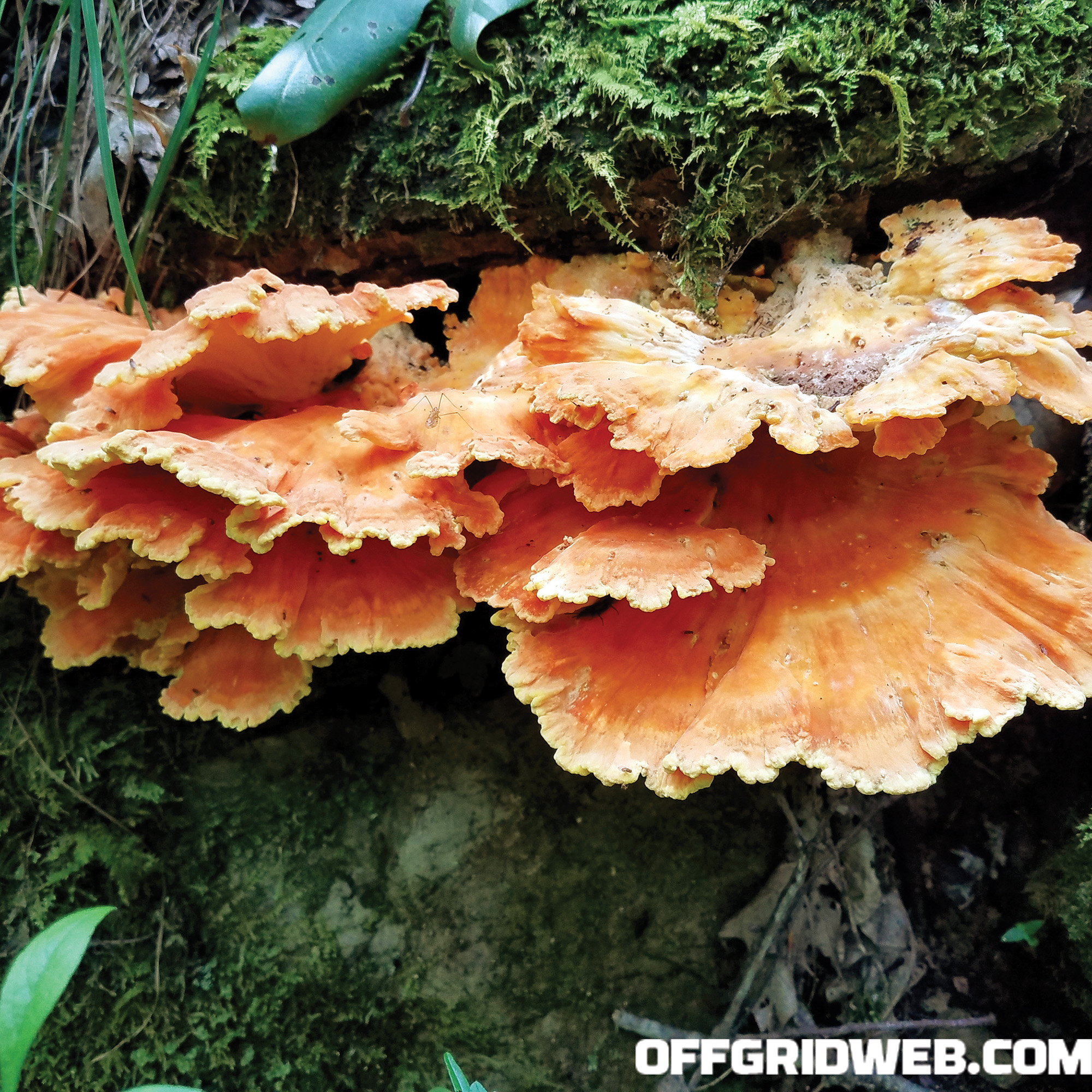
It’s not unheard of to harvest 50 pounds of chicken of the woods from a single tree.
This colorful mushroom has a texture that allows it to be used as a substitute for chicken — coated in batter and fried or added to pasta or soup.
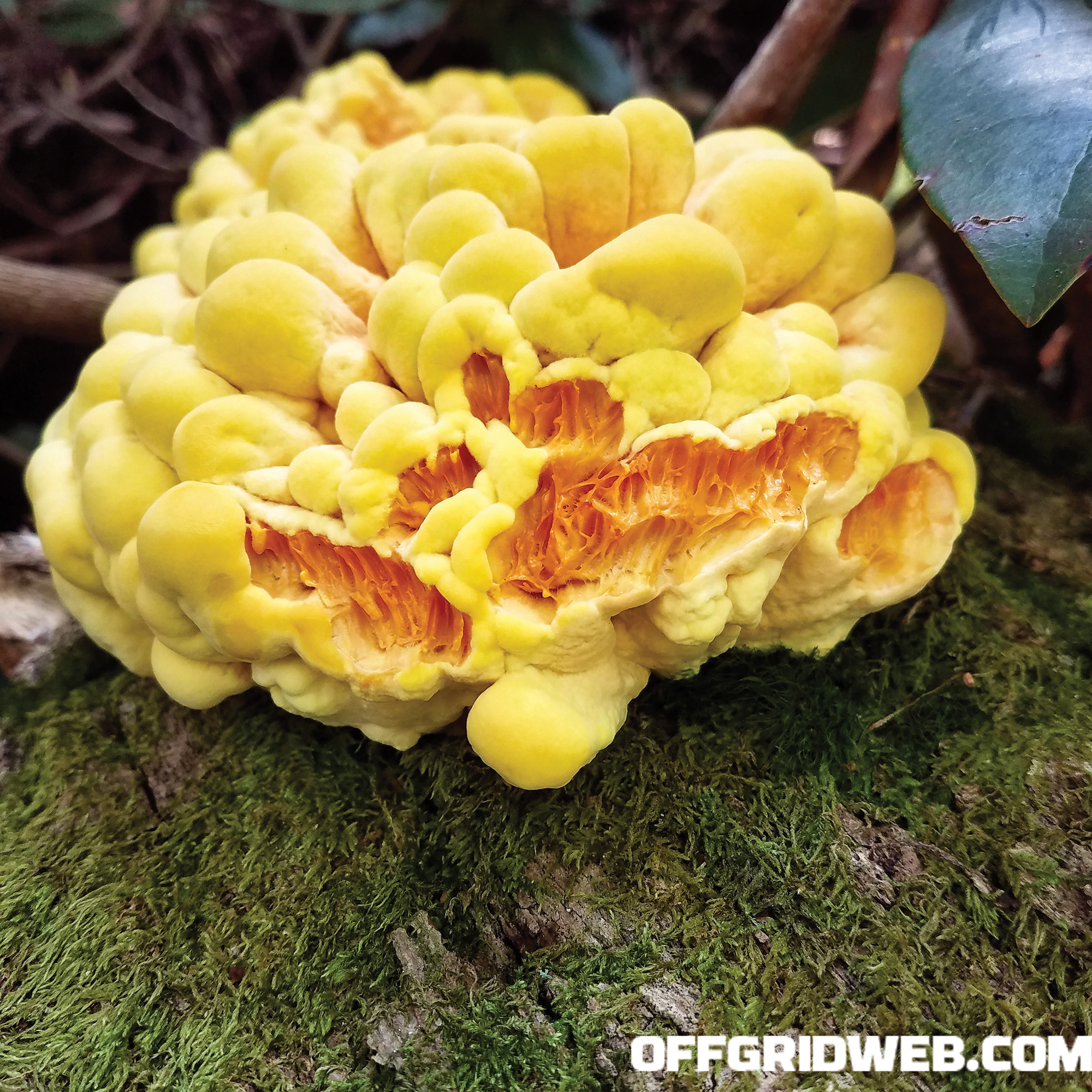
The unmistakable colorations of chicken of the woods make it a good species for beginners.
Note that there are Laetiporus species in the western U.S. and Great Lakes region that are considered mildly toxic. Until recently, these were believed to be Laetiporus sulphureus, but they tend to grow on conifers (and on eucalyptus in the case of one). Just to be safe, only harvest chicken of the woods from hardwoods.
> Hen of the woods (Grifola frondosa)
While the name will make you believe it’s a close relative of Laetiporus species, hen of the woods (also known as maitake) isn’t even in the same family. This species is a large mushroom, comprised of lobes that fan out from a central core.
More often than not, hen of the woods is found attached to the base of living oaks in late summer through fall. Just like Laetiporus, it has pores underneath rather than gills, and the upper portions are wavy and brown, bringing to mind the tailfeathers of a hen.
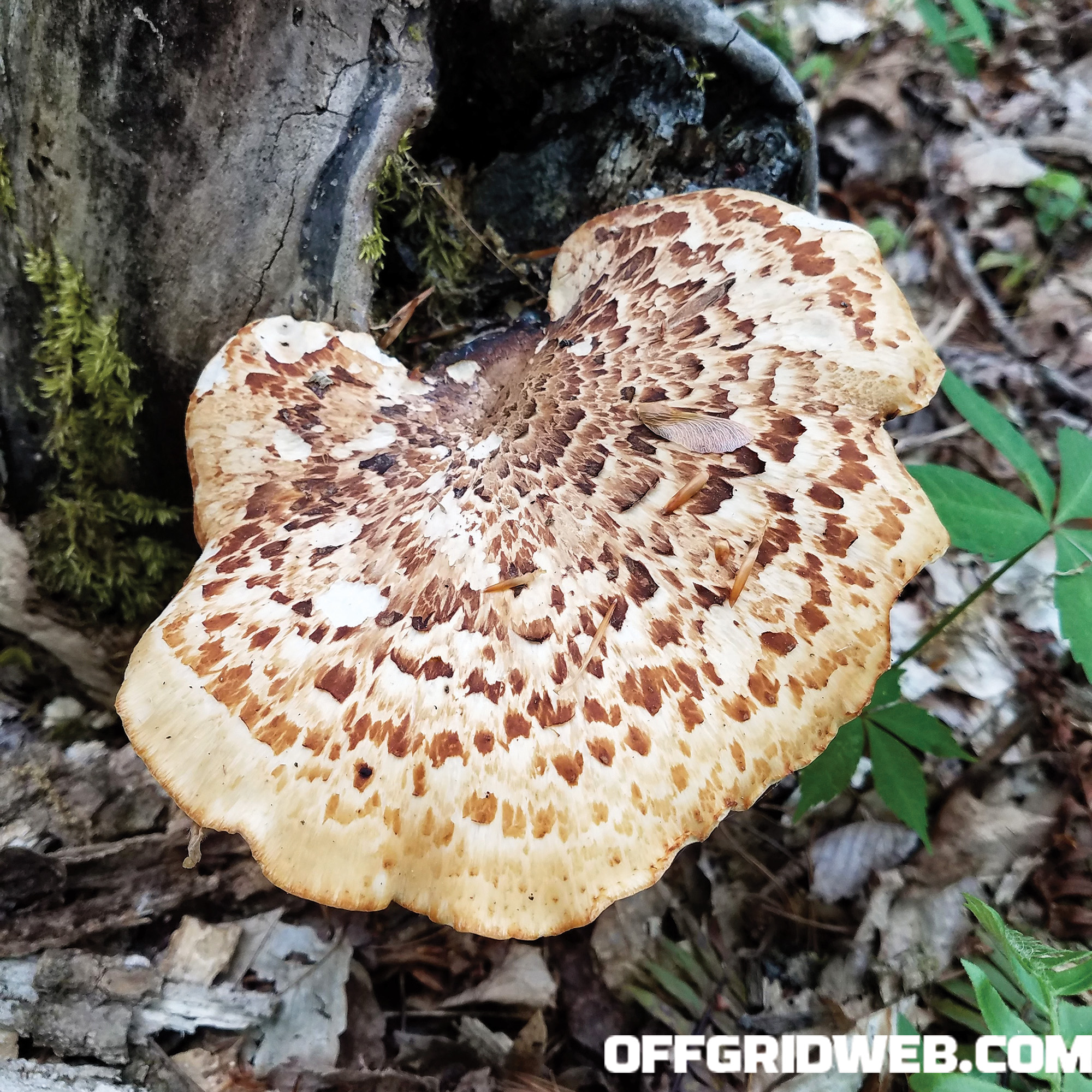
The pheasant back or dryad’s saddle is said to have a lemony flavor that goes well with chicken or fish.
Hen of the woods is found in the northeastern and mid-Atlantic United States and Canada. Once you find an oak that hosts this species, you can return to the same tree again and again to harvest the fruiting bodies.
> Death caps and death angels (Amanita species)
An estimated 90 to 95 percent of mushroom-related deaths in North American are due to ingestion of the Amanita genus, according to the Journal of Forensic Science. Of those deaths, Amanita phalloides (the death cap mushroom) is responsible for more than 90 percent, and while this species isn’t native to North America, it has been introduced and is quite common along the West Coast of our continent.
Other species of Amanita are native to North America and widely distributed. Multiple species share the common name of death angel. One cap from an Amanita mushroom can contain a lethal dose of toxin.

Death caps and death angels
Amanitas can be recognized by volvas (veils at the base through which the stalk protrudes) and white spore prints. They’ll sometimes (but not always) have warts and stem rings.
> Galerina marginata
A little brown mushroom that contains amanitin, the same toxin as that in death caps and death angels, Galerina marginata can be found year-round in both coniferous and hardwood forests all across North America.
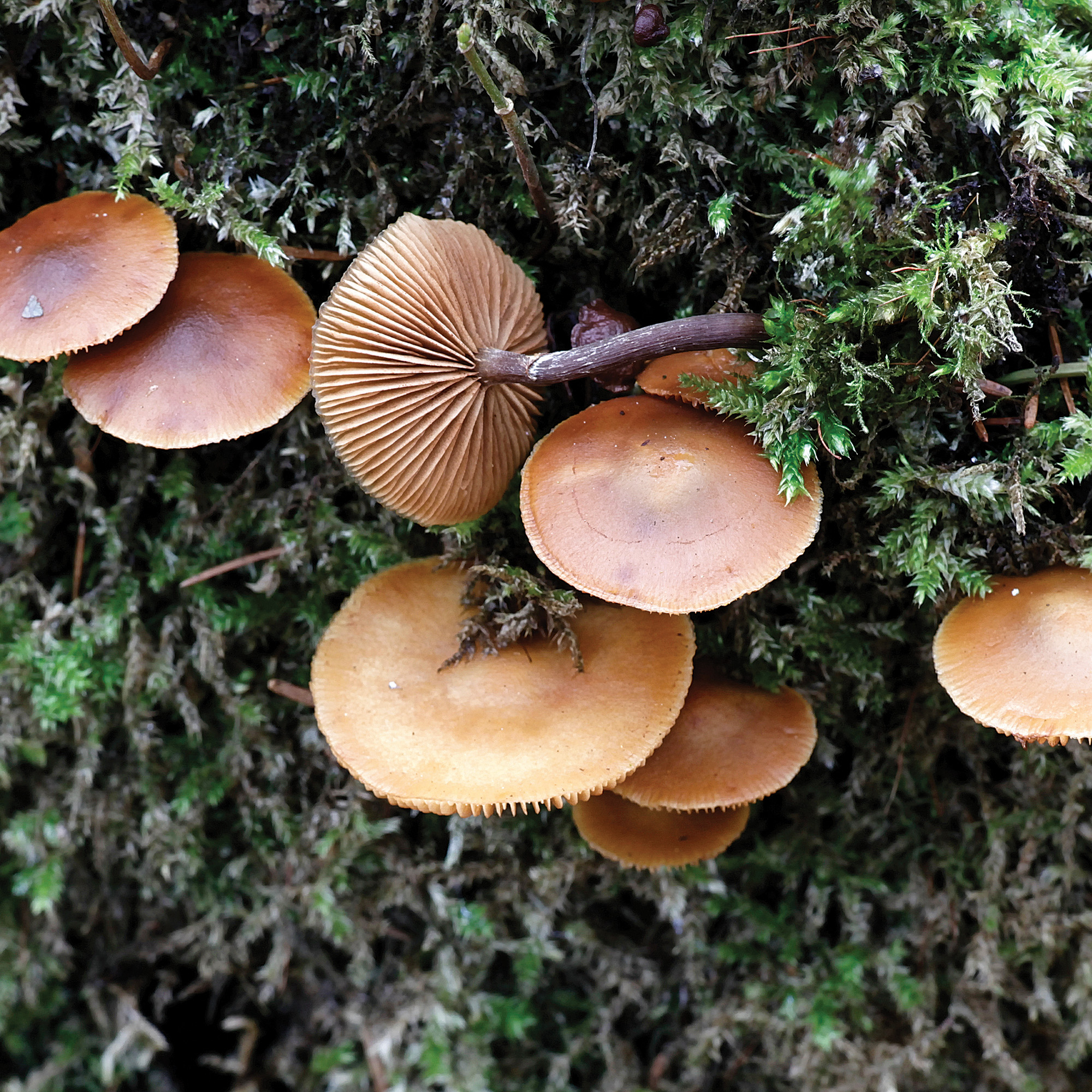
Galerina marginata
This species is typically attached to wood and sometimes grows in clusters, and while it’s relatively nondescript, it can be distinguished from lookalikes by its spore print, which will appear rusty brown in color.
It’s estimated that 15 to 20 caps of this species will provide a lethal dose to adults.
> False morels (Gyromitra species)
Only 20 cases of false morel poisoning have been reported in the United States since 1900, but half of those proved fatal, according to the Journal of the American Board of Family Medicine.
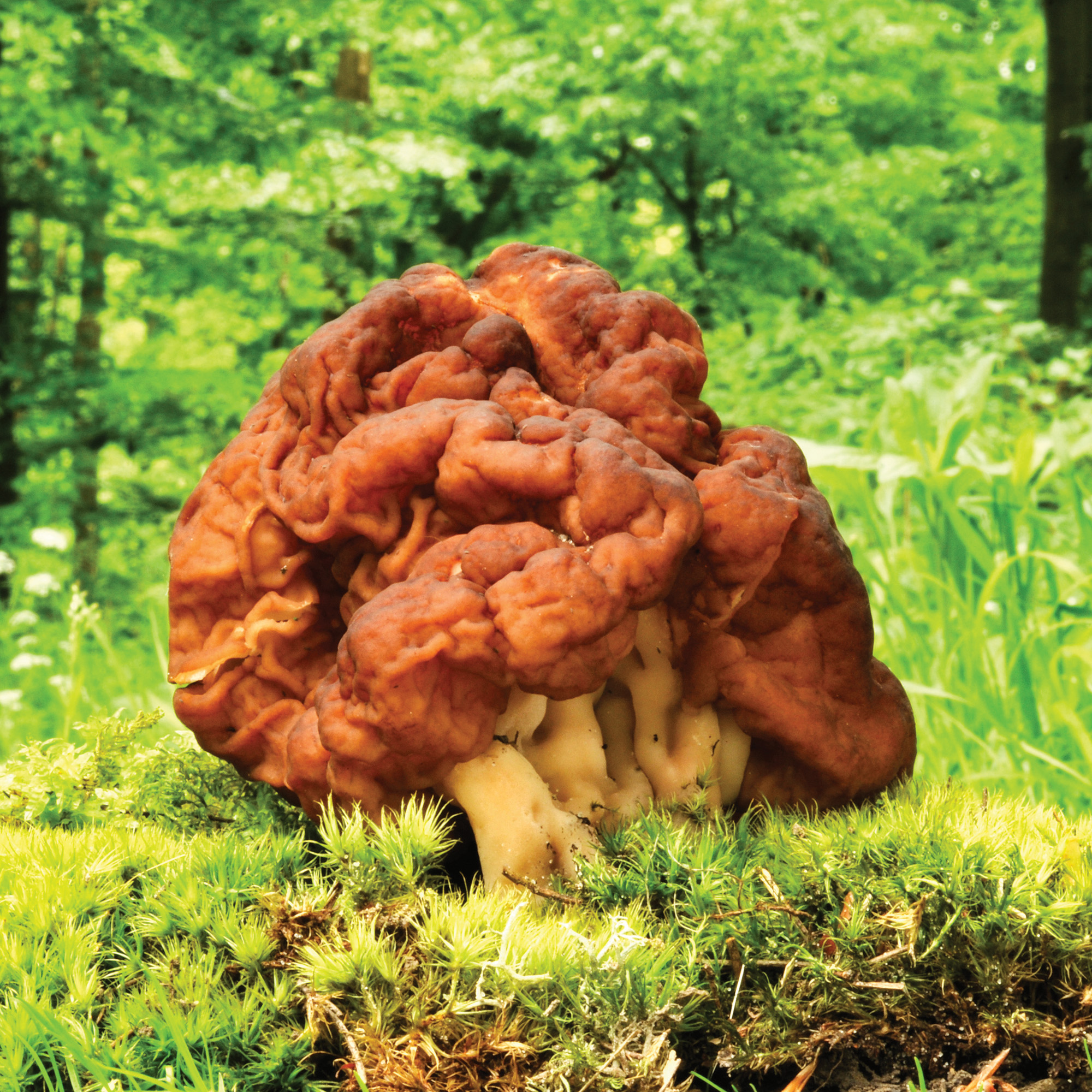
False morel
Gyromitra species are distributed widely across the United States and typically emerge in the spring. Rather than the pitted caps seen on true morels, this toxic look-alike will have a cap that more closely resembles a smashed and wrinkled brain on a stalk. Slicing the mushrooms open lengthwise, the true morels are hollow, but the insides of the false can be somewhat cottony in texture.
> Jack-o-lanterns (Omphalotus illudens)
Jack-o-lantern mushrooms are often found growing in the same habitats and at the same time as chanterelles, so the two can be easily mistaken. While you may see several chanterelles together, they’ll be separated on different stalks that emerge from the soil, while jack-o-lanterns will grow from wood in clumps. Furthermore, the stalk of chanterelles will have a texture reminiscent of string cheese.
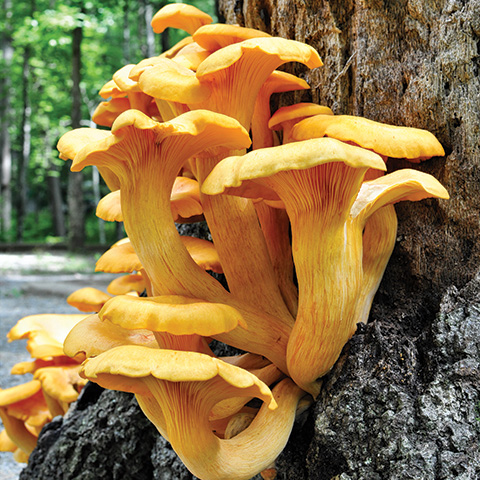
Jack-o-lantern mushrooms
Jack-o-lantern mushrooms have blade-like gills beneath the cap, whereas chanterelles have false gills more akin to wrinkles. Right in line with its Halloween-inspired common name, the jack-o-lantern has the characteristic of being bioluminescent.
If you suspect that you or someone you know has eaten a toxic mushroom, get medical attention immediately. Contact the Poison Control Center at (800) 222-1222, and the call will be routed to a nurse or pharmacist near you. If it’s possible to take a sample of the ingested mushroom to the emergency room with the patient, do so.
The Legalities of the Hunt
A limited number of mushrooms for personal use may be harvested from U.S. Forest Service lands. The limit is one gallon per day or five gallons per season. If the harvest exceeds this, or if the mushrooms are to be marketed, a permit will be required.
This can vary if the species of interest is listed as threatened or endangered in the area or in regards to harvesting in designated special biological areas. The rules are more variable in regards to National Park Service property as well as state forests and state parks. If you intend to forage on public lands, it’s wise to check with a manager first to avoid legal woes in the long run.
Labeling requirements and other regulations that relate to selling wild-harvested mushrooms at farmers markets or other outlets will be location-specific. Check with the market manager or your county’s Cooperative Extension office for the most reliable information.
Foraging for wild mushrooms can be a rewarding proposition, with nutritional, gourmet products to be found from spring through fall. For those new to the game, there’s a lot of homework to do. Guidebooks, online communities, face-to-face time with experts, or, preferably, all of the above can help you gain the knowledge to feast safely. And if there’s ever any doubt as to a collected mushroom’s identity, it’s best to just walk away.
About the Author
Phillip Meeks is an agriculture and natural resources educator originally from Tennessee, but now based in the mountains of Southwest Virginia. He likes to spend his weekends hiking, gardening, beekeeping, fishing, and mushroom hunting.
 STAY SAFE: Download a Free copy of the OFFGRID Outbreak Issue
STAY SAFE: Download a Free copy of the OFFGRID Outbreak Issue
No Comments